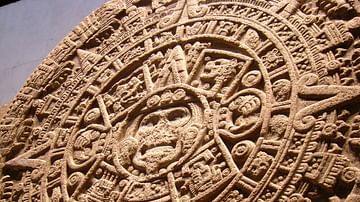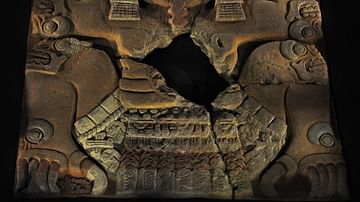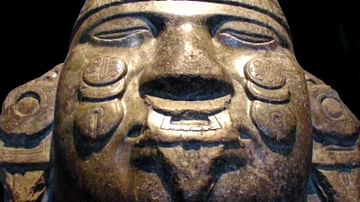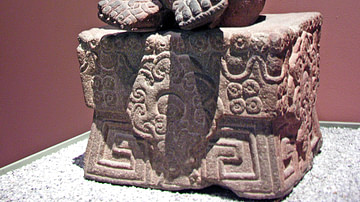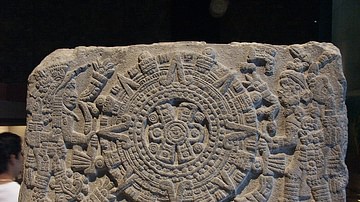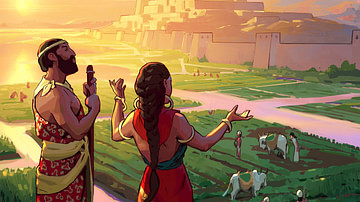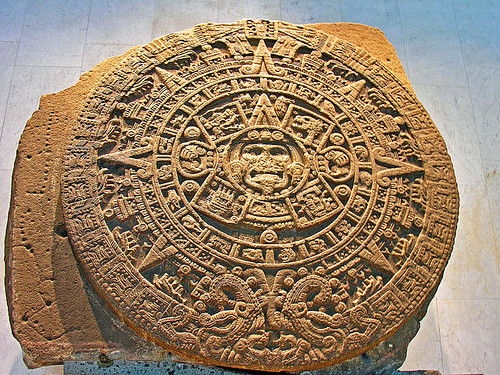
The Aztec Sun Stone (or Calendar Stone) depicts the five consecutive worlds of the sun from Aztec mythology. The stone is not, therefore, in any sense a functioning calendar, but rather it is an elaborately carved solar disk, which for the Aztecs and other Mesoamerican cultures represented rulership. At the top of the stone is a date glyph (13 reed) which represents both the beginning of the present sun, the 5th and final one according to mythology, and the actual date 1427 CE, thereby legitimizing the rule of Itzcoatl (who took power in that year) and creating a bond between the divine and mankind.
The stone was discovered in December 1790 CE in the central plaza of Mexico City and now resides in the National Museum of Anthropology in that city. The richly carved basalt stone was once a part of the architectural complex of the Temple Mayor and measures 3.58 metres in diameter, is 98 centimetres thick, and weighs 25 tons. The stone would originally have been laid flat on the ground and possibly anointed with blood sacrifices. When it was discovered, the stone was lying flat and upside down, perhaps in an attempt to prevent the final cataclysm - the fall of the 5th and final sun - as the Aztec world fell apart following the attack from the Old World.
At the centre of the stone is a representation of either the sun god Tonatiuh (the Day Sun) or Yohualtonatiuh (the Night Sun) or the primordial earth monster Tlaltecuhtli, in the latter case representing the final destruction of the world when the 5th sun fell to earth. The tongue is perhaps also a sacrificial knife and, sticking out, it suggests a thirst for blood and sacrifice. Around the central face at four points are the other four suns which successively replaced each other after the gods Quetzalcoatl and Tezcatlipoca struggled for control of the cosmos until the era of the 5th sun was reached. The suns are known by the day name on which their final destruction occurred. Beginning from the top right there is the first sun Nahui Ocelotl (4 - Jaguar), top left is the second sun Nahui Ehécatl (4 - Wind), bottom left the third sun Nahui Quiáhuitl (4 - Rain) and bottom right is the fourth sun Nahui Atl (4 - Water).
On either side of the central face are two jaguar heads or paws, each clutching a heart, representing the terrestrial realm. The band running immediately around the suns is segmented into the 20 Aztec day-names (hence the Calendar Stone name). Then there is a decorative ring surrounded by another ring depicting symbols which represent turquoise and jade, symbols of the equinoxes and solstices, and the colours of the heavens. The two heads at the bottom centre represent fire serpents, and their bodies run around the perimeter of the stone with each ending in a tail. The four cardinal and the inter-cardinal directions are also indicated with larger and lesser points respectively.
